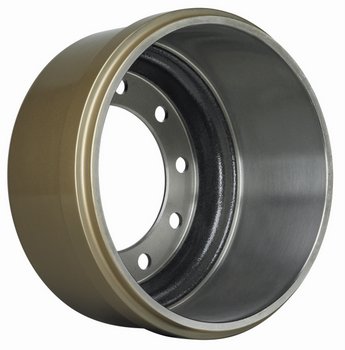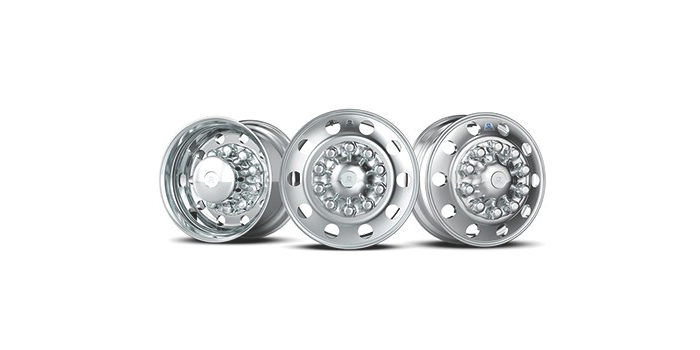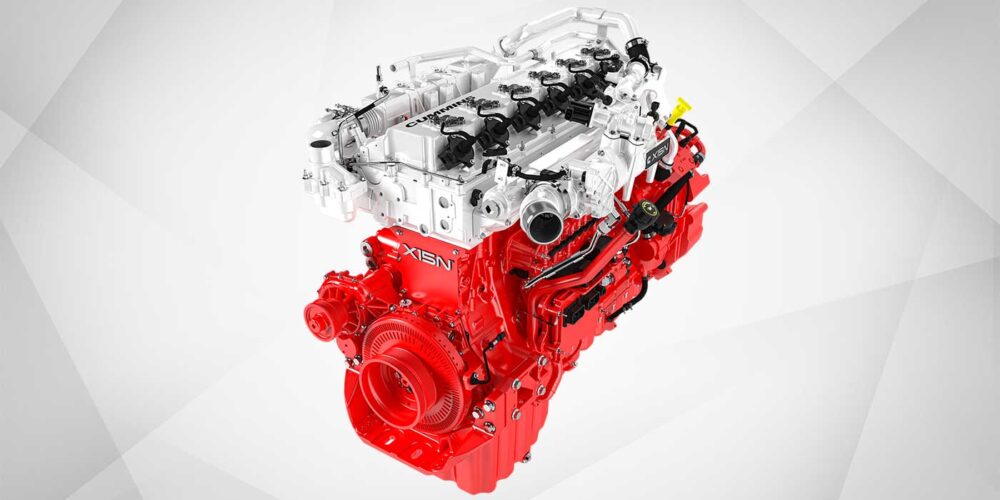Is there any fleet manager who isn’t interested in minimizing his fleet’s operating costs but doesn’t understand that he needs to utilize every bit of service life out of his equipment that’s economically possible? That’s true, of course, for trucks, tractors and trailers, but it’s also true for the parts that make up a fleet’s rolling assets.
Some parts are designed to wear as they deliver service—think of brake shoes and drums. Other parts, while not actually designed to wear away, can be expected to deteriorate with age and will need to be replaced periodically. Determining just when and with what to replace these parts is the job of fleet managers and technicians. Making good “just when and with what” decisions will result in those items delivering their maximum service before replacement is needed.
Shop safety
Inflated heavy-duty tire and wheel assemblies can be dangerous, lethal in fact, if they are not handled properly. According to Alcoa’s Wheel Service Manual, statistics indicate that in most industries only one in 1,000 serious accidents results in a fatality. However, when the event involves heavy tires and wheels, one in every 10 serious accidents is a fatality, 100 times more often.
This is why OSHA has written regulations that apply to even the smallest shops involved with wheel work. Shop foremen should pay particular attention during crucial steps:
• Removal of tire and wheel assemblies from vehicles;
• Demounting tires from wheels;
• Wheel inspections;
• Inflation of tires; and
• Handling and storing of inflated assembly.
Pertinent OSHA regulations are contained in 29 C.F.R. Section 1910.177. Included in the section is the statement, “The employer shall provide a program to train all employees who service rim wheels in the hazards involved in servicing those rim wheels and the safety procedures to be followed. The employer shall assure that no employee services any rim wheel unless the employee has been trained and instructed in correct procedures of servicing the type of wheel being serviced.” The applicable regulations are included in the previously-referenced Alcoa manual.
Wheel maintenance
To maximize service life, wheel end components to include both drums and wheels, should be inspected regularly. While it is not usually possible to predict its useful life, a wheel will likely wear out eventually and need to be replaced. This is especially true of wheels operating in severe conditions. They, as well as older wheels, should be inspected for signs that they should be removed from service.
Alcoa service engineers recommend that you examine all exposed areas frequently. Clean wheels and look for cracks, corrosion, wear or other damage. Also check the inner wheel of a set of duals when the outer wheel is removed. During tire changes, thoroughly examine the entire wheel. Pay particular attention to the rim contour and the surfaces of the rim.
Since some forms of wheel damage can be hidden beneath the tire, thoroughly examine the complete wheel whenever a tire is removed. Remove all grease and road dirt. Use a wire  brush or steel wool to remove rubber from the bead seats. Check mounting holes for enlargement and elongation which can occur if the cap nuts are not kept tight. Dirt streaks radiating from stud holes may indicate loose cap nuts.
brush or steel wool to remove rubber from the bead seats. Check mounting holes for enlargement and elongation which can occur if the cap nuts are not kept tight. Dirt streaks radiating from stud holes may indicate loose cap nuts.
Brian Thomas, a spokesperson for Alcoa Wheels, says, “Aluminum wheels are very robust. When used properly, they easily last the life of the truck or trailer. Our warranty claims are very low. The few warranty claims that we do receive are often due to overloading or improper loading of equipment. All of our wheels include load ratings. Alcoa includes a heat sensitive sticker. Overloading of the wheel exposes it to heat. When the temperature threshold is compromised, the sticker indicates the breach of heat limit and the wheel must be replaced.”
Accuride, a supplier of both steel and aluminum wheels, recommends that you looks for signs of cracks and rust lines (for steel wheels) originating from bolt holes, as these are common signs of low clamping force. It is also important to pay close attention of wheel studs. Clean them regularly. Rust and corrosion should be removed from all mounting surfaces on the wheel, hub, drum and studs. Also remove burrs on or around the bolt holes or center holes.
Rafael Gonzalez, director of wheel product management at Accuride, says, “Pay attention to torque, both under torque and over torque. In the case of the latter, over torque can also compromise the life of the mounting stud. This is especially important after wheel rotations. Another concern is when steel wheels are being refinished because of corrosion. When a steel wheel is repainted, the original finish is normally removed by sandblasting. Unfortunately, there are times when some of the original paint remains on the surface, which can cause false torque readings.”
Motor Wheel says, “We advise that wheels be initially tightened to the upper limit of 500 ft.-lb. After 50 to 100 miles of operation, the wheel nuts should be checked for tightness and when necessary. A torque check should also be made part of the vehicle’s scheduled maintenance program or at 10,000 mile intervals, whichever comes first.”
Remember, if a stud is broken, also replace the adjacent studs on either side of the broken stud. If two or more studs are broken, all of the studs on that wheel must be replaced.
Brake drums
Consistent, reliable brake system performance is dependent on a sound brake system maintenance program to include regular inspection of brake drums. Different trucking applications put a wide variety of demands on brake systems; consider line-haul versus refuse-fleets, there is no industry wide timetable for brake system inspections. A regular inspection program should be established on a fleet-by-fleet basis depending upon the demands the operation puts on its vehicle’s braking systems.
Gunite service engineers offer information on some common problems encountered during brake drum inspections.
Cracked drums—a drum with a crack extending through the entire wall must be replaced. This condition may indicate driver abuse, if the brake system components are correctly rated for the application.
Heat checking—numerous short, fine, hairline cracks on the braking surface of the drum is a normal condition, however, it is advisable to make sure that deep cracks have not developed.
Greased-stained drums—will show discolored spots on the braking surface with oil and/or grease spattered on the brake assembly. The source of the contaminant must be located and eliminated. Remove the entire brake assembly and clean each component thoroughly. If the linings are soaked, they must be replaced.
Martensite spotted drums—with hard, slightly raised dark colored spots on the braking surface with uneven wear indicates that the drum has been subjected to extremely high temperatures caused by an improperly balanced braking system, a dragging brake or continued severe brake applications. The drum must be replaced, then the entire braking system checked for proper balance between the tractor and the trailer as well as wheel to wheel.
Blue drums—have been subjected to extremely high temperatures. This condition may be caused by continued hard stops, by brake system imbalance or improperly functioning return springs. To correct this problem, the brake system should be checked for proper balance. The return springs should be checked to determine if they are weak or broken. The brake should be checked for proper adjustment and clearance.
Polished drums—can easily be solved by sanding the braking surface with 80 grit emery cloth. It is also necessary to remove the glaze from the linings at the same time using the same emery cloth. The brake system should be checked for lightly dragging brake(s) as well as the linings to make sure that they have the correct friction rating.
Jeffrey Clark, product manager for the Gunite product line at Accuride, says, “When our warranty department gets complaints from the field, they are usually the result of the product choices fleets have made. When fleets look to replace drums on their vehicles, they may, in some cases, not select the appropriate drum for their application. Low cost does not always mean that the fleet will save money in the long run. An operator that is looking only for a minimum price weight drum and not looking at the application in which that drum will be used in may well see a reduction in performance. Fleets need to make the correct choice for the application in which the truck will be operating.”
Bart Lore, general marketing manager for PACCAR Parts, echoes the caution, “With discount brake drums, our dealers often see out-of-round conditions resulting from poor manufacturing. This can lead to vibration, which can significantly reduce tire life and cause many other issues with other nearby wheel components such as brakes and suspensions. Brake drum manufacturers that don’t follow a rigorous quality-control process during manufacturing often take short cuts, leading to the production of oblong or out-of-round brake drums.”
What to buy
Because of the many things medium and heavy trucks are asked to do, there is no such thing as a “one-size-fits-all” choice when it comes to either wheels or brake drums. Light weight will save fuel or offer greater payload potential so that may be a reasonable option if your equipment never has to leave good roads. However, as Accuride’s Gonzalez says, “In applications where vehicles may be operating in a mixed highway and off-road operation, it is important to use the correct wheel for their equipment.”
Replacement parts should meet all associated SAE or FMVSS recommended guidelines for quality. These documents can be found on-line at standards.sae.org/commercial-vehicle/ and nhtsa.gov/cars/rules/import/fmvss/. PACCAR Parts’ Lore says, “Look for non-OEM parts with warranties backed by a reputable OEM. While value is a big consideration when choosing non-OEM parts, quality and proper fit must also be part of the equation.”
If lightweight makes sense in your operation, you are now faced with the choice between premium steel and aluminum wheels. Even the lightest steel wheels are heavier than aluminum but the cost differential demanded by aluminum may be a hard nut for some fleets especially when steel wheel suppliers keep offering new cost saving options. For example, Accuride recently introduced a new coating that is described as extending the service life of steel wheels by two additional years. Rick Dauch, Accuride president, says, “We estimate that wheels protected by Steel Armor provide up to two additional years or more of service before wheels must be removed and refinished.”
Accuride, which claims to already offer the lightest steel wheel in North America, is rumored to be shortly introducing an even lighter product offering. Yet, there is no doubt that aluminum offers some distinct advantages. Alcoa’s Thomas says, “Fleets looking to take weight out of their equipment in order to haul more can achieve this advantage when shifting to lighter weight aluminum wheels. In the most extreme scenario, shifting an 18-wheeler from steel dual (22.5- x 8.25-in.) wheels and tires to Alcoa aluminum 14-in. wide base wheels and tires saves 1,400 lbs. on the rig. That’s 1,400 lbs. of more freight. They hold up to curbing and other abuse. They also don’t require painting or refurbishing upkeep over the life of the equipment. We see that the pay-off can be achieved quickly and the savings are enjoyed over the life of the truck or trailer.”
There are some decisions that only you can decide. If you take those 1,400 lbs. out of a combination, will you be able to add 1,400 lbs. of cargo? If you pull tankers, probably. If you pull dry vans, maybe not. If not, will you be able to get a pay back through fuel savings?
OEMs can help you answer such questions. Don’t hesitate to ask them. Every day, new products are being introduced that can help make your operation more competitive if applied effectively.














